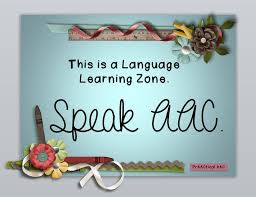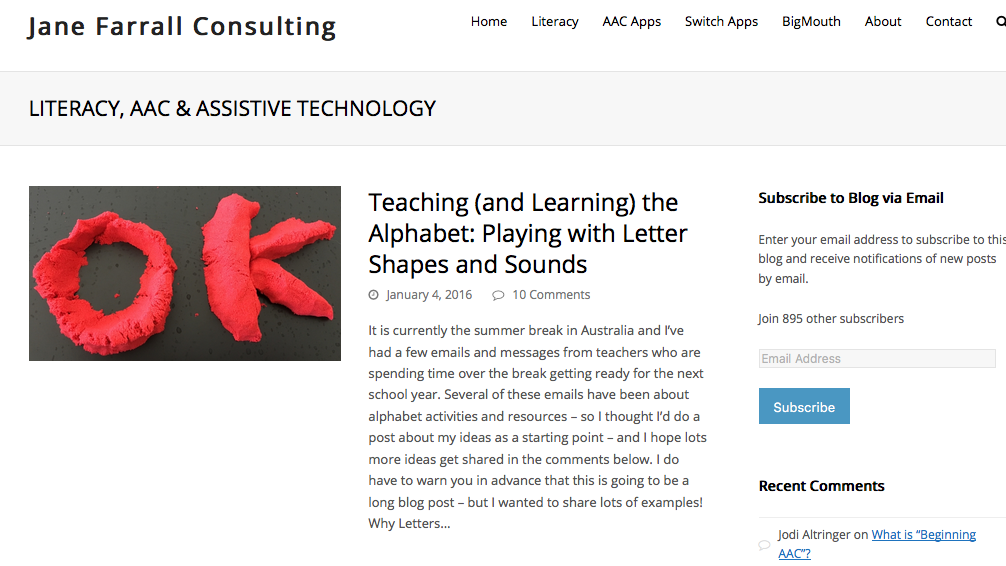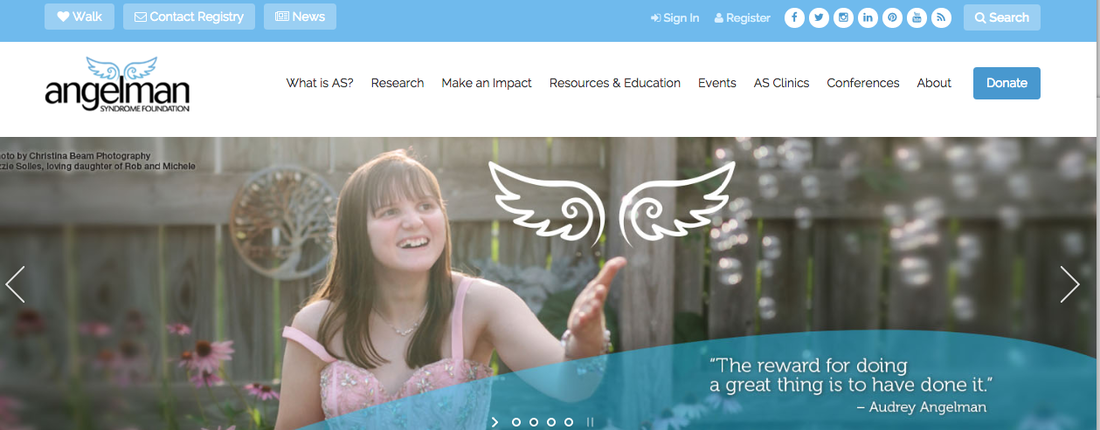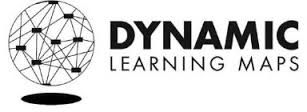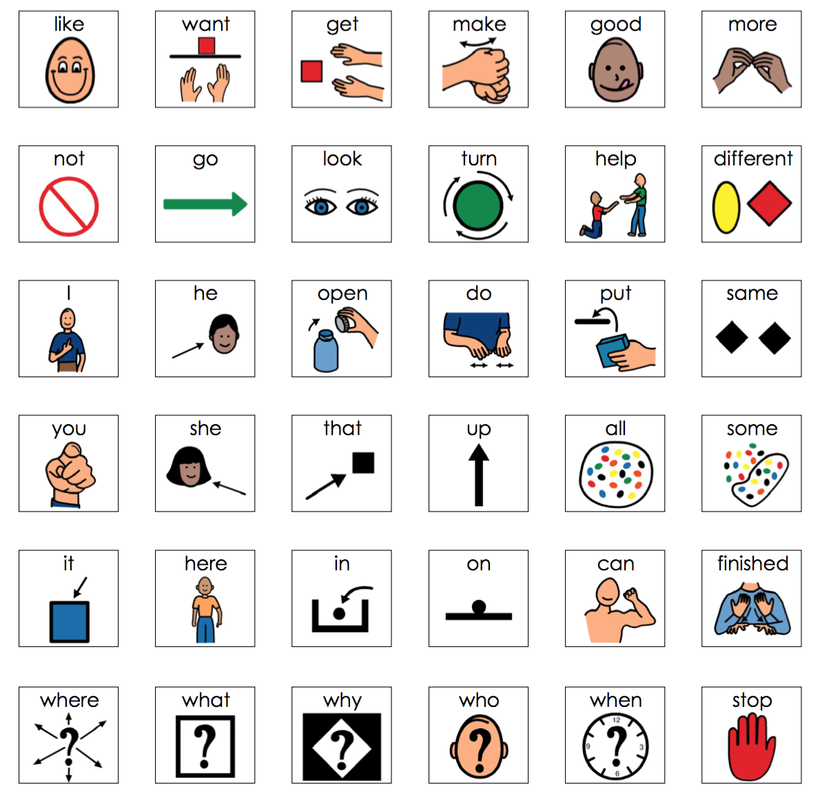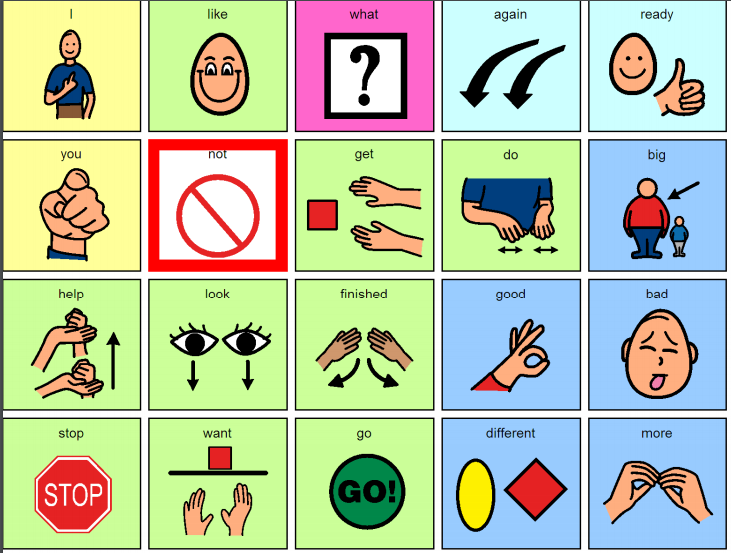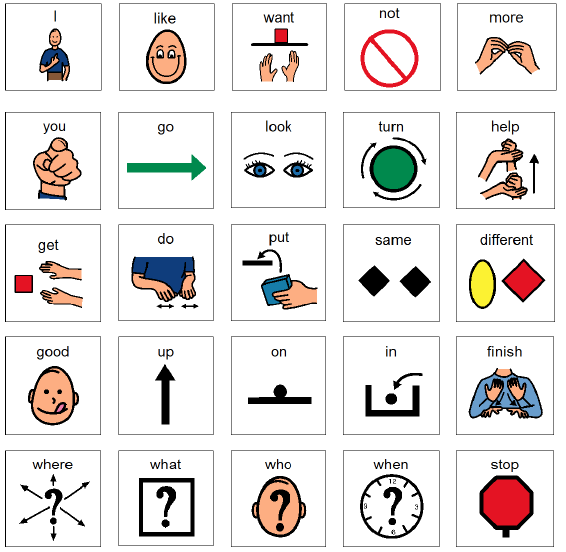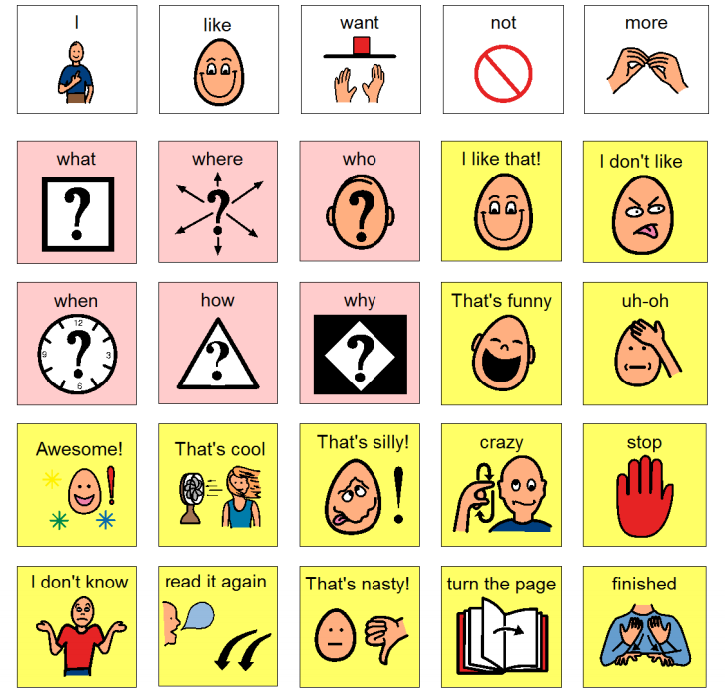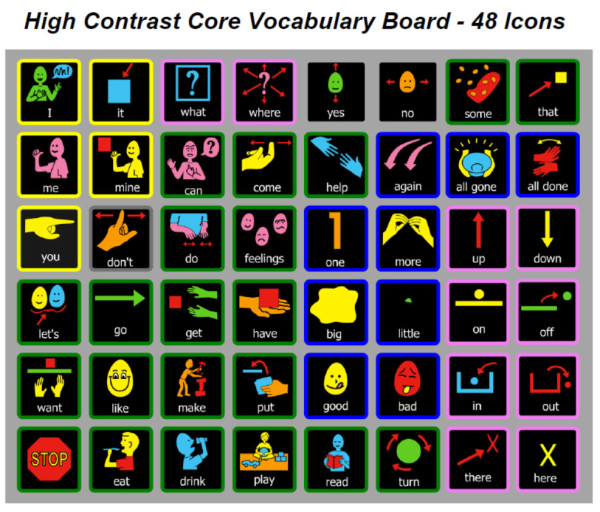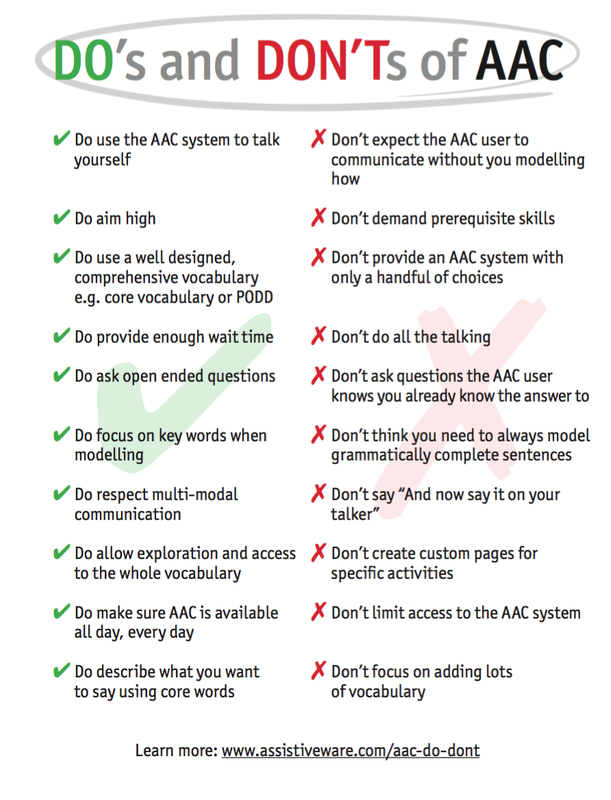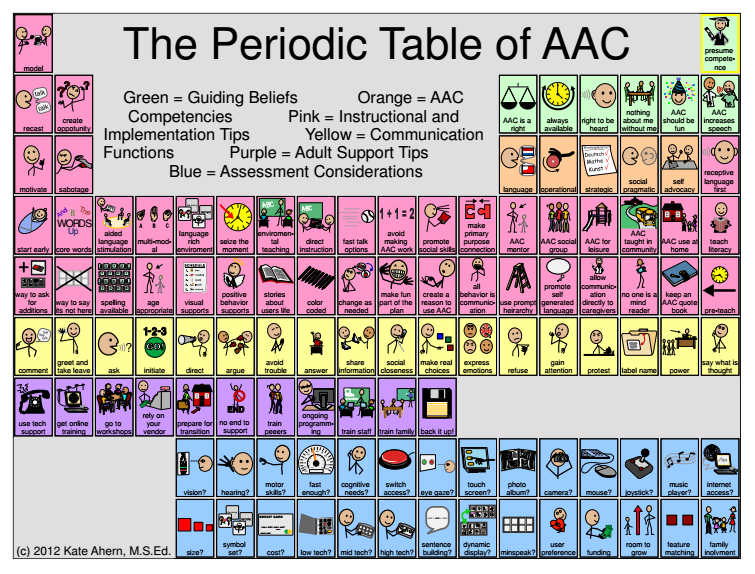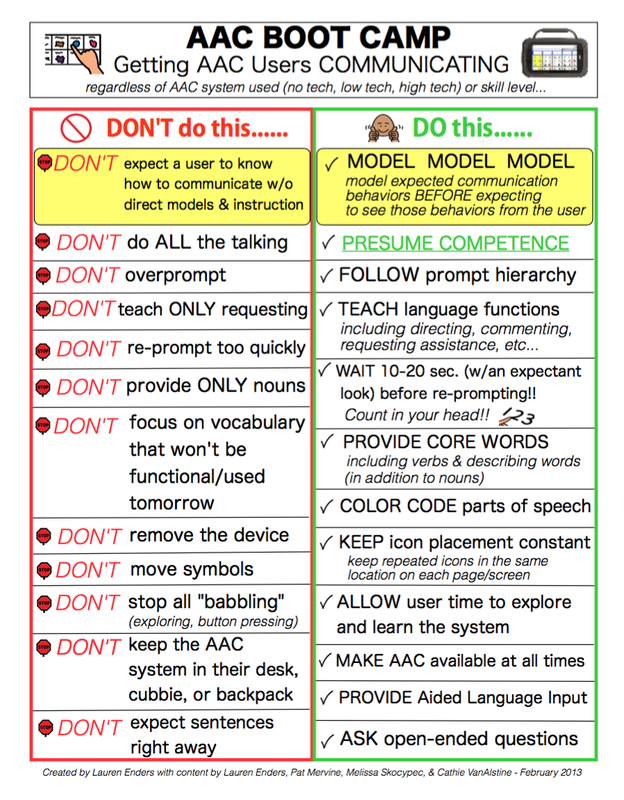Websites...
|
PrAACtical AAC supports a community of professionals and families who are determined to improve the communication and literacy abilities of people with significant communication difficulties. It was founded in 2011 by two SLP professors, Carole Zangari and the late Robin Parker, around a shared passion for AAC. The resources found here are researched based and truly amazing.
Jane Farrall hosts this very resourceful blog titled "Literacy, AAC and Assistive Technology". An excellent resource for parents, teachers and clinicians.
|
Communication Training Series WebinarsAngelman.org has enlisted the expertise of Maureen Nevers, Caroline Musselwhite and Erin Sheldon to create a year long series on communication. The first three webinars have been posted for you.
|
Dynamic Learning Maps
This site was developed to provide professional development for educators working with students with significant disabilities. It focuses on teaching and learning in the areas of English language arts and mathematics. The are currently 51 modules. Beginning Communicators and Core Vocabulary and Communication are linked here.
|
Different core displays...
DLM 36If your student doesn't have a device, the 36 core words on these low tech boards have been researched by the Center for Literacy and Disability Studies and reflect words that are most commonly used in classroom setting.
These core boards should never replace a well constructed currently available device/system.
Core 20- SETT BC
GoTalk 20 Social
GoTalk 20 Shared Reading: Comments & Questions
Here are some examples of fringe vocabulary.
Your browser does not support viewing this document. Click here to download the document.
|
High Contrast for students with low visionUse this high contrast board for those students with vision issues. It is provided courtesy of Rachel Langley and was posted on PrAACtially Speaking.
Text Based
Your browser does not support viewing this document. Click here to download the document.
Colour coded core 45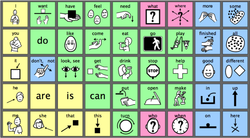
This core board is colour coded (see Fitzgerald Key) to help guide the user and communication partner to locate words. If colour coding makes sense for your student, it is important to stay consistent across low to high tech devices.
Adapted by Heather Daniluck, EPSB.
Your browser does not support viewing this document. Click here to download the document.
This core flip book is step two in a series of three boards that build on each other. They are provided here in both PDF and BoardMaker formats. It was created by Parkland School Division SLPs.
Your browser does not support viewing this document. Click here to download the document.
Word Power 42/60 low tech flip book
Your browser does not support viewing this document. Click here to download the document.
Caroline Musselwhite's flip book
Your browser does not support viewing this document. Click here to download the document.
An additional page for flip books: Emergency Messages
Your browser does not support viewing this document. Click here to download the document.
| ||||||||||||||||||||||||||||||||||||||||||||||||||||||||||||||||||||||||||||||||||||||||||||||||||||||||||||||||||||||||||||||||||||||||||||||||||||||||||||||||||||||||||||||||||||||||||||||||||||||||||||||||||||||||||||||||||||||||||||||||||||||||||||||||||||||||||||||||
Good to have...
|
Jane Farrall and AssistiveWare created this poster. Each point on the poster is described in detail on Jane's blog at this link.
|
Augmentative and alternative communication is an abstract issue that many people struggle to get their head around so Kate Ahern developed this Periodic Table of AAC. The graphic is color coded with items about
| ||||||||||||
|
Communication Bill of Rights
|
This poster by Lauren Enders supports communication partners to help get their AAC users communicating.
|
|
Your browser does not support viewing this document. Click here to download the document.
|
|
| ||||||||||||
Presentations: Will be posted for a period of time and then removed.
|
Presented to the Interactions Network, Edmonton Public Schools. January 18/16.
Your browser does not support viewing this document. Click here to download the document.
Presented to EPSB March 7/16
Your browser does not support viewing this document. Click here to download the document.
|
Core Vocabulary in Special Education Clasrooms. Presented by Gail VanTatenhove
Your browser does not support viewing this document. Click here to download the document.
Presented to EPSB March 21/16
Your browser does not support viewing this document. Click here to download the document.
| ||||||||||||||||||||||||
